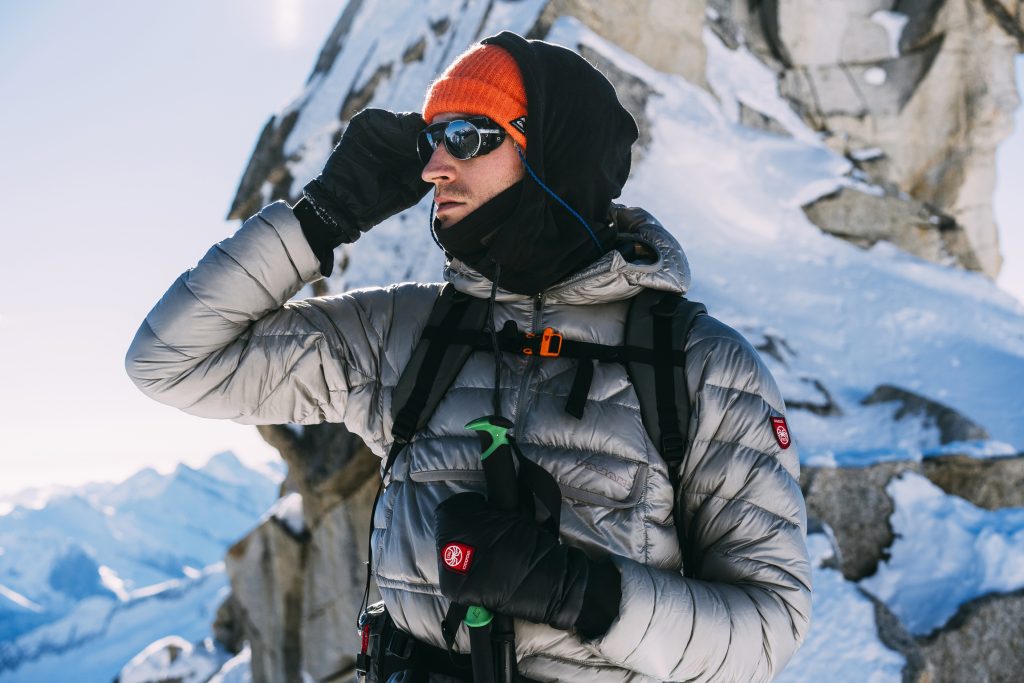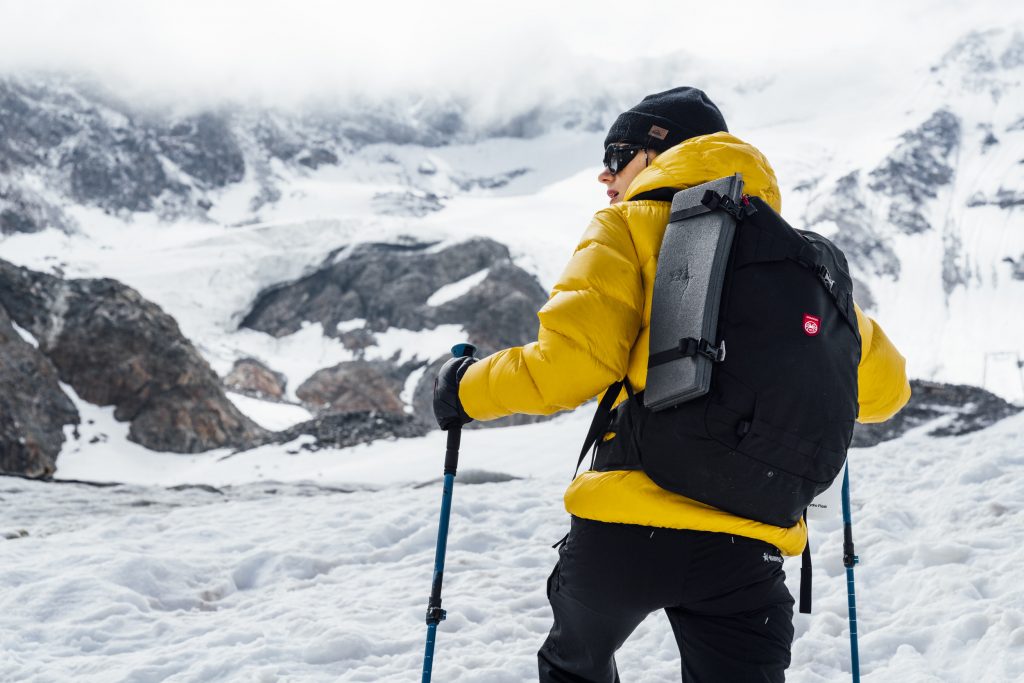
WHAT TO TAKE ON YOUR FIRST FIVE-THOUSANDER?
In the life of every true mountaineer, there comes a moment when they want to raise the bar and climb to a place where snow never disappears and the sky seems within reach. Five thousand meters above sea level is a special height. You won't conquer it easily. You need good preparation, both in terms of equipment and endurance. Is it worth it? Absolutely!
WHAT WILL YOU LEARN FROM THIS POST?
- Does an expedition to a five-thousander require specialized equipment?
- What jacket to take to a five-thousander?
- What sleeping bag will be suitable for 5,000 meters above sea level?
IN BRIEF
You won't find 5,000-meter peaks in Europe (except for Mount Elbrus, although its affiliation to Europe is still a subject of debate). This magical boundary will require good physical and equipment preparation from you. When packing, don't forget about a warm and comfortable down jacket and a reliable sleeping bag in which you can sleep comfortably and recharge your energy before the final summit push.
PACKING FOR THE FIVE-THOUSANDER
Climbing a five-thousander is not a one-day trip. Therefore, it requires well-thought-out and packed equipment.
The clothes you take to the five-thousander must take care of your comfort both "down below" – in the valleys, where beautiful sunny weather may prevail – and at the summit, in cold, snowy, and windy conditions. To ensure versatility, choose a few essential layers. Your backpack should not be without thermal underwear, high merino or smartwool socks, a lightweight fleece jacket, and softshell pants. It's also worth considering lightweight and easily compressible insulated pants with natural down filling. The Ghost line from Pajak offers long gaiters and shorts with a side zipper for easy wearing. Good boots are also essential – not hiking models, but high-altitude mountaineering footwear with good ankle stability and effective insulation. Don't forget a hat, neck gaiter, and gloves either.
But without a doubt, the most crucial role for your comfort on the way to a five-thousander will be played by the jacket!

JACKET
You can choose from various options - a rainproof hardshell with insulation, a three-season jacket, or an option that will provide you with thermal comfort even in harsh conditions on the summit: a down jacket from Pajak.
The advantage of a down jacket over other solutions in terms of thermal insulation lies in its phenomenal properties of natural insulation, which not only provide excellent insulation against the cold but are also lightweight and compressible, making them a minimal burden in your equipment.
In truly cold regions, the Heritage 1983 jacket inspired by the Golden Era of Polish Himalayan mountaineering will prove itself. Filled with the finest Polish goose down and featuring a classic design and functional details - a deep adjustable hood, spacious pockets, a two-way zipper - it will provide comfort and warmth in the most challenging weather conditions. It is suitable for both hiking and climbing, but most importantly, it will keep you warm during breaks.
Another popular model of down jackets that will work practically everywhere is the Eskimo. This typical mid-layer can be invaluable during altitude and temperature changes. Its remarkable functionality allows you to have an intermediate layer under a hardshell in summit areas, an outer layer during exhausting and warming approaches, and a lightweight vest in sun-drenched valleys. Yes! Eskimo allows you to detach the sleeves and hood, and when compressed, it fits into an integrated pocket, becoming a one-liter package weighing less than half a kilogram. That speaks for itself, doesn't it?
EQUIPMENT AND LOGISTICS
The choice of equipment largely depends on the logistics of the expedition. Matters such as ropes, ice axes, or other climbing gear are individual for each specific peak. Of course, for the first expedition, it is better to choose a route that does not require advanced climbing skills. However, crampons and trekking poles will be useful even on non-technical routes, preferably with an external lock that withstands low temperatures.
Similarly, the issue of stoves and food provisions depends heavily on the chosen route. You can bring lightweight sets of freeze-dried food designed for expeditions. In other places (such as the approach to Everest Base Camp), it may be worth considering eating at lodges or with locals. Regardless of the chosen strategy, you should equip yourself with a trail survival kit that will protect you from sudden energy drops. Protein bars are a great snack to boost your energy. Don't forget to stay hydrated. Experts in climbing five-thousanders recommend carrying at least 2 liters of fluids, even in cool weather.

WHAT SLEEPING BAG FOR A FIVE-THOUSANDER?
Another equipment item dependent on the expedition's logistics is the sleeping bag. It should provide comfort at the temperature prevailing at the highest camp below the summit. Assuming you plan to sleep in a tent, the temperature near the summit in a moderate climate should be around -10°C. In such conditions, the sleeping bags from Pajak's Radical line Radical will work perfectly - probably the most technologically advanced down sleeping bags in the world. We are confident that you will sleep peacefully in the Radical 10Z sleeping bag filled with Polish White Goose Down with a loft of 900 FP. The lower comfort limit in this model is -13 degrees, and features such as the 3D draft collar, adjustable collar, and most importantly, the IRL inner layer that traps the infrared radiation emitted by your body, ensure safety and nocturnal regeneration. You can find this and other Radicals at pajaksport.pl.
NOT ONLY EQUIPMENT
Even a short expedition to a five-thousander requires extensive preparation. It is a threshold that verifies your physical and mental fitness, necessitates acclimatization (the level between 2000 and 4000 meters above sea level is crucial for the body), and can be treacherous in terms of weather. Therefore, it is important to take care of your endurance so that conquering Elbrus, Kazbek, or Kilimanjaro becomes a truly beautiful adventure and a source of satisfaction rather than the worst ordeal. Remember that at Pajak, we gladly support bold initiatives because, just like you, we love the mountains!
Photo source: pajaksport.pl